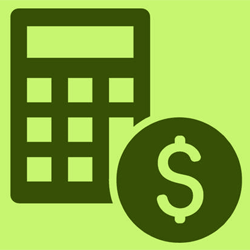I learned two very important lessons early in my career. I learned that two professionals can pull down decent money yet still fall short of their expectations for savings. And I learned that job security is an illusion – a point driven home painfully when one of us fell unexpectedly out of work. Fortunately, a friend and colleague suggested I read Your Money or Life: Transforming Your Relationship with Money and Achieving Financial independence, by Joe Dominguez and Vicki Robin.
 The book’s title comes from the assertion that we’d all gladly give up our wallets when confronted with an armed robber. In that moment, we’re crystal clear that it’s more important to give up our cash than risk bodily harm or death. But we fail to have that blinding insight in the day-to-day management of our lives. We trade away vast quantities of our lives for the sake of earning money, often at jobs that we find unfulfilling, aggravating, stressful, or some combination thereof.
The book’s title comes from the assertion that we’d all gladly give up our wallets when confronted with an armed robber. In that moment, we’re crystal clear that it’s more important to give up our cash than risk bodily harm or death. But we fail to have that blinding insight in the day-to-day management of our lives. We trade away vast quantities of our lives for the sake of earning money, often at jobs that we find unfulfilling, aggravating, stressful, or some combination thereof.
The authors acknowledge that it takes money to finance life’s basic needs along with the range of diversions that make life interesting. But they advocate for an elevated consciousness surrounding money to avoid falling into the trap of working more and enjoying less. To that end, they offer up the following definition:
Money is something for which we choose to trade our life. We “pay” for money with our time.
They don’t judge the choices any of us makes. They simply want us to respect our life energy enough to make these choices consciously. That respect leads to gaining clarity on:
- What we really need versus what we think we want
- What purchases genuinely bring us fulfillment
- What constitutes “enough” for each of us
They provide a nine step plan for raising consciousness and taking action on those insights. Two of those steps proved especially valuable for me.
 They challenge readers to calculate their bottom-line hourly wage – i.e., the cash that finds its way into the pocket in exchange for the hours expended. That calculation demands a close accounting of the actual hours invested in working that would not be expended absent the job – i.e., all paid shifts, overtime, after-hours work at home, commuting, business travel, etc. It also calls for tallying up all of the expenses that go along with working – e.g., taxes, FICA, transportation, wardrobe, daily Starbucks, eating out for lunch, eating out after work if too tired to cook, child care, household help, etc.
They challenge readers to calculate their bottom-line hourly wage – i.e., the cash that finds its way into the pocket in exchange for the hours expended. That calculation demands a close accounting of the actual hours invested in working that would not be expended absent the job – i.e., all paid shifts, overtime, after-hours work at home, commuting, business travel, etc. It also calls for tallying up all of the expenses that go along with working – e.g., taxes, FICA, transportation, wardrobe, daily Starbucks, eating out for lunch, eating out after work if too tired to cook, child care, household help, etc.
It sounds rather tedious to go through the exercise of figuring out what an hour of one’s time is actually worth. But that figure becomes the bellwether for a whole range of impulse decisions. I ask myself regularly, “Do I really want to give up X amount of time in exchange for Y? Is it really worth it to me?
The second impactful exercise was definitely tedious, but well worth it. They challenge readers to track every single penny they spend and add them up by category. The big ticket items were easy to identify – mortgage, car loans, student loans, utilities, healthcare premiums, health club membership. Credit card spending and loose cash took more work, but it wasn’t all that tough. We kept a notepad in the kitchen and “balanced” our cash on a daily basis.
Our big lesson: Loose cash creates a big drain on resources when you don’t pay attention to it… and that’s a lot of life energy to squander! We found that we were spending an inordinate amount of money on dining out. We didn’t eat in fancy restaurants. But we ate out several nights a week at sandwich shops, inexpensive ethnic food restaurants, and fast food restaurants. Even low budget dining out racks up a lot more spending on a monthly basis than eating in. So we found low effort ways to eat at home and saved a bunch of money!
Here’s another way to think about it. The daily $5 latte may not seem like a big deal. After all, it’s just $5. But if that’s an indulgence enjoyed every working day, it adds up to over $1,000 per year. Is that the best use of $1,000 of money?
At the end of the day, conscious spending is not onerous; it’s liberating. Through conscious spending, we’ve paid off our debts, contributed consistently to savings, and developed our roadmap to a secure retirement. It reflects another keystone definition from the book:
A frugal lifestyle reflects the virtue of getting good value for every minute of life energy and from everything for which you have use. A frugal life is characterized by a high Joy-to-Stuff ratio!
Each of us must ask ourselves: What am I willing to give up to achieve financial independence? Mr. Dominguez and Ms. Robin helped me find my answer.